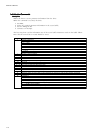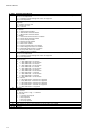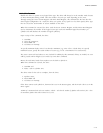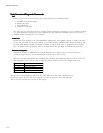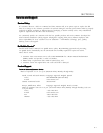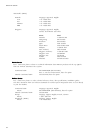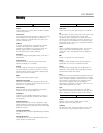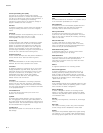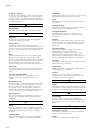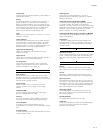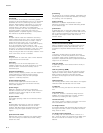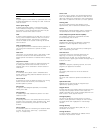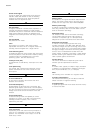
GLOSSARY
GL – 4
frequency response
A measure of how effectively a circuit or device transmits
the different frequencies applied to it. In disk and tape
drives this refers to the read/write channel. In disk drives,
it can also refer to the dynamic mechanical characteristics
of a positioning system.
GG
GG
G
gigabyte (GB)
One billion bytes (one thousand megabytes) or 10E9.
HH
HH
H
hard error
An error that is not able to be overcome by repeated
readings and repositioning means.
hard sectored
A technique where a digital signal indicates the
beginning of a sector on a track. This is contrasted to soft
sectoring, where the controller determines the beginning
of a sector by the reading of format information from the
disk.
head
The electromagnetic device that write (records), reads
(plays back), and erases data on a magnetic media. It
contains a read core(s) and/or a write core(s) and/or erase
core(s) which is/are used to produce or receive magnetic
flux. Sometimes the term is all inclusive to mean the
carriage assembly which includes the slider and flexure.
head crash
The inadvertent touching of a disk by a head flying over
the disk (may destroy a portion of the media and/or the
head).
head disk assembly (HDA)
The mechanical portion of a rigid, fixed disk drive. It
usually includes disks, heads, spindle motor, and
actuator.
head loading zone
The non-data area on the disk set aside for the controlled
takeoff and landing of the Winchester heads when the
drive is turned on and off. Dedicated annulus on each
disk surface in which heads are loaded, unloaded, or
flying height is established. Head-disk contact may occur
in some instances; no data is recorded in this area.
head positioner
Also known as actuator, a mechanism that moves the
arms that carry read/write heads to the cylinder being
accessed.
II
II
I
index
Similar to a directory, but used to establish a physical to
logical cross reference. Used to update the physical disk
address (tracks and sectors) of files and to expedite
accesses.
inside diameter
The smallest radial position used for the recording and
playback of flux reversals on a magnetic disk surface.
initialization
Applying input patterns or instructions to a device so that
all operational parameters are at a known value.
input
Data entering the computer to be processed; also user
commands.
input/output (I/O)
The process of entering data into or removing data from
a computer system or a peripheral device.
intelligent peripheral
A peripheral device that contains a processor or
microprocessor to enable it to interpret and execute
commands.
interface
The data transmitters, data receivers, logic, and wiring
that link one piece of computer equipment to another,
such as a disk drive to a controller or a controller to a
system bus.
interface standard
The interface specifications agreed to by various
manufacturers to promote industry-wide
interchangeability of products such as a disk drive.
Interface standards generally reduce product costs,
allows buyers to purchase from more than one source,
and allow faster market acceptance of new products.
interleave
An ordering of physical sectors to be skipped between
logical sectors on your hard disk.
I/O processor
Intelligent processor or controller that handles the input/
output operations of a computer.
interrupt
A signal, usually from a subsystem to a central
processing unit, to signify that an operation has been
completed or cannot be completed.
JJ
JJ
J
jumper
A small piece of plastic that slides over pairs of pins that
protrude from the circuit board on the hard drive to make
an electrical connection and activate a specific option.
KK
KK
K
kilobyte (KB)
A unit of measure of approximately 1,000 bytes.
(However, because computer memory is partitioned into
sizes that are a power of two, a kilobyte is really 1,024
bytes.)
LL
LL
L
landing zone or Lzone
The cylinder number/location to where the read/write
head(s) move upon power down.
late bit
A bit that is in the late half of the data window.



